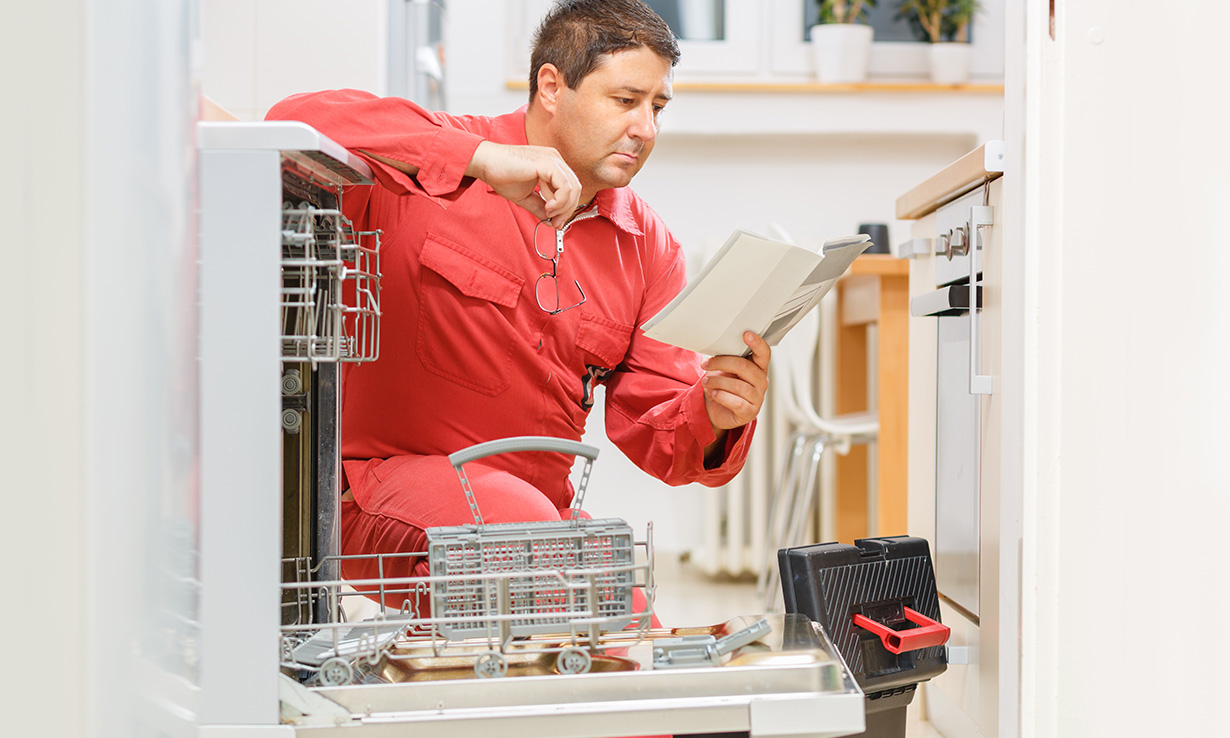The content which follows involving How to Troubleshoot & Repair a Dishwasher is extremely engaging. Don't overlook it.

Having your dish washer failure or malfunction can be a big deal and trigger some pain in your home. Dish washers are equipments that we use to clean dishes and cutleries immediately to conserve us the stress and anxiety of manually doing it.
Like every other equipment that reduces human initiative, dishwashers can break down and develop some fault eventually in time. There are numerous faults your dishwashing machine might create, and also while several of them can be solved by replacing some components or repairing them, various other extra severe problems will need that you obtain a brand-new dish washer.
This article will identify a few typical faults your dishwashing machine might create to prevent its total efficiency and also how these faults can be solved.
Common Faults
Common dishwasher faults could range from minor to major ones. Depending on the degree, you will either need the services of expert plumbing technicians to repair or replace it.
A few of the most common faults include:
Leaky Dishwasher
This is possibly one of the most day-to-day dishwashing machine issue, as well as fortunately is that it is easy to identify. Leaks occur as a result of numerous factors, as well as the leaks can make a mess of your kitchen. Usual sources of dishwashing machine leaks consist of;
If your meals and also flatwares come out of the dish washer and still look filthy or unclean, your spray arms might be a problem. In a lot of cases, the spray arms can get clogged, as well as it will call for a quick tidy or a replacement to function efficiently once more.
Failure to Drain pipes
In some cases you might discover a huge amount of water left in your bathtub after a laundry. That is possibly a drain trouble. You can either inspect the drainpipe hose pipe for problems or blockages. When doubtful, contact a specialist to have it checked as well as fixed.
This is another typical dish washer problem, as well as it is mainly triggered by food particles or grease sticking around in the machine. In this situation, seek these particles, take them out as well as do the dishes without any meals inside the machine. Laundry the filter extensively. That will certainly help do away with the poor scent. Ensure that you eliminate every food fragment from your dishes before moving it to the equipment in the future.
Conclusion
A few of these usual dishwasher faults can be taken care of conveniently at home, but in some cases, the faults could be huge as well as may need the focus of specialists. If you stay in Rochester, Syracuse, and also other parts of America, let the professionals correctly diagnose what could be incorrect with your dish washer and proffer a solution.
We also install dishwashers if you just purchased a new one or intend to replace your own. With our many years of experience in the industry, we are sure to offer you the most effective feasible services.
Dishwasher Won’t Drain? 8 Steps to Fix It
Run the Disposal
A full garbage disposal or an air gap in a connecting hose can prevent water from properly draining out of the dishwasher. Simply running the disposal for about 30 seconds may fix the issue.
Check for Blockages
Check the bottom of the dishwasher to make sure that an item or pieces of food haven't fallen from the rack to block the water flow.
Load the Dishwasher Correctly
Make sure you’re loading the dishwasher correctly. Read the manufacturers’ instructions or owner’s manual for tips and directions on how to load dishes for best results.
Clean or Change the Filter
You may have a clogged dishwasher filter that’s preventing water from draining. Many homeowners don’t realize that dishwasher filters need to be cleaned regularly. Check your owner’s manual to see where the filter is located on your dishwasher, and for instructions on how and when to clean it. For many dishwashers, the filter can be found on the inside bottom of the appliance.
Inspect the Drain Hose
Check the drain hose connecting to the sink and garbage disposal. Straighten any kinks that you may see, which could be causing the problem. Blow through the hose or poke a wire hanger through to check for clogs. Make sure the hose seal is tight, too.
Try Vinegar and Baking Soda
Mix together about one cup each of baking soda and vinegar and pour the mixture into the standing water at the bottom of the dishwasher. Leave for about 20 minutes. If the water is draining or starting to drain at that time, rinse with hot water and then run the dishwasher’s rinse cycle. That may be enough to help loosen any clogs or debris that are preventing the dishwasher from draining properly.
Listen to Your Machine While It's Running
Listen to your dishwasher while it’s running a cycle. If it doesn’t make the usual operating sounds, particularly if it’s making a humming or clicking noise, the drain pump and motor may need replacing. If this occurs, it may be time to call a professional for help.
https://www.ahs.com/home-matters/repair-maintenance/how-to-fix-a-dishwasher-that-is-not-draining/

I was introduced to that article about How to Troubleshoot & Repair a Dishwasher from a good friend on our other web page. Are you aware of somebody who is fascinated about the niche? Be sure promote it. We enjoy reading our article about Common Dishwasher Problems.
Visit Link